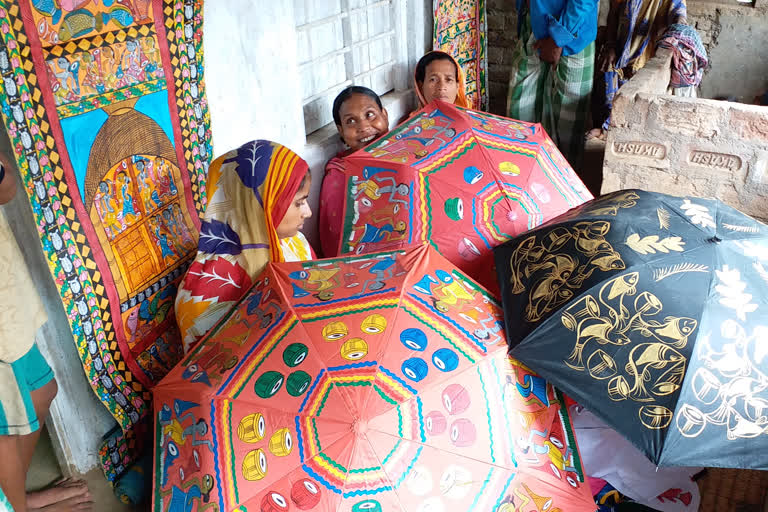Panskura (West Bengal):Pat chitras, series of paintings on a long string of paper, are a traditional art form of West Bengal, and artisans have for centuries used the art to depict both mythological sagas and contemporary issues.
The artists, known as 'Patuas', earn their livelihood by narrating the story depicted in the art through songs, mostly in rural areas. The art usually depicts mythical characters or from the Hindu epics Ramayana and Mahabharata, but also portray the present-day developments.
The art form, which had already taken a hit after television and even the internet to some extent penetrated into the villages, is on a further decline ever since the COVID-induced lockdown was imposed. Many Patuas had already shifted to other professions, but the handful of them who continued to cling on to the art and decided to carry on the legacy, have been badly hit by the lockdown and travel disruptions.
With all congregations and fairs, which formed the dais for these artists, being banned due to the COVID situation, many Patuas have now improvised, and are now painting on sarees, salwar-kameez, dupattas and even T-shirts to ensure an alternative source of income to sustain their livelihood.
Over time, Panskura in Purba Medinipur district has been established as the hub of the Patuas, who live and also create their art here. Keshbari village of Panskura used to be known as the 'Patua village' and around 100 Pat artists still live here.
The main earning season for the artists basically begins from July, as fairs across the state, along with industrial and art fairs across the country start from September onwards and continue till March. Every artist of the village used to venture out to different fairs and earn around Rs 30,000 by the end of the season.
Read:Transgenders learn folk art to survive amid pandemic
Now, with the pandemic having put a full-stop on all such activities, the artists, unable to arrange even one square meal on some days, have decided to try alternative routes of sustenance.
